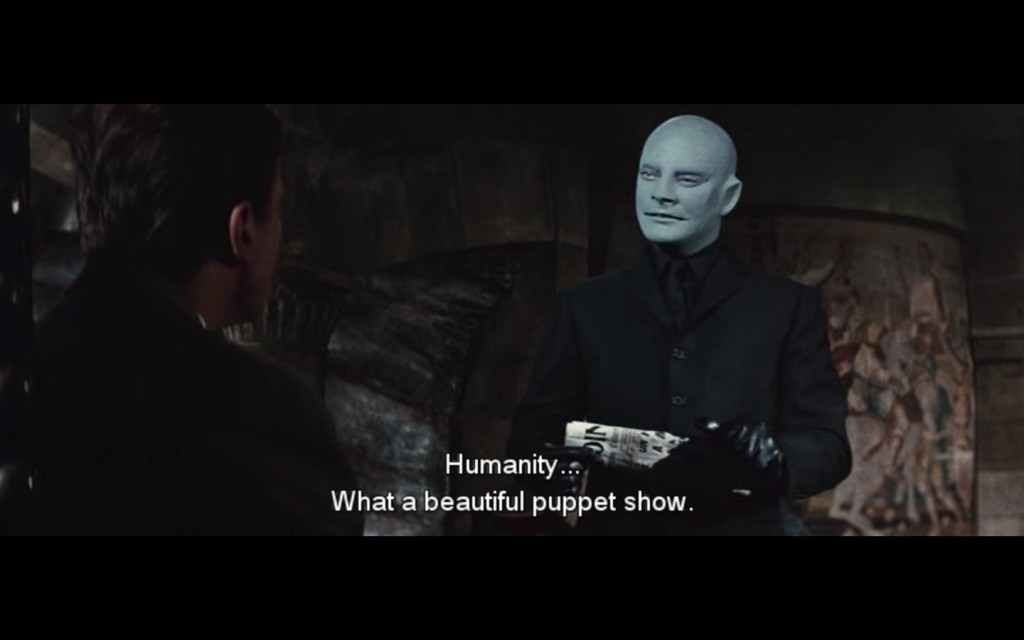MANUAL OVERRIDE: THE SABOTAGE OF CAPITAL
4 Lectures by Evan Calder Williams
All the ‘Millecento’ cars were having problems… and when they went out on the test track, they were dancing all over and making infernal noises: inside the transmission and gearbox tunnel, [the workers] had welded Coca Cola bottles.
– Enrico Auteri, head of personnel for Fiat
In a demonstration of this security hole’s potential, Salvatore Stolfo, the head of research at Columbia University’s Computer Science Department, and researcher Ang Cui, showed how a hijacked computer could send instructions to a printer to continuously heat its fuser unit — the heated rollers that are used to bond toner particles to the paper — eventually leading to the paper turning brown and smoking. Fortunately, the printer used in the demo had a thermal switch that shut the system down before any damage was done, but researchers believe that cheaper offerings without this safety feature could be used to start fires in real life.
– from IT Pro Portal, November 2011
I have not given you a rigidly defined thesis on sabotage because sabotage is in the process
of making.
– Elizabeth Gurley-Flynn, Sabotage: the conscious withdrawal of the workers’ industrial efficiency
The history of sabotage is the history of its hypothetical non-existence, of recurrent attempts to deny that it does or should happen. Barring scattered supporters, using elements of a machine, system, organism, code, network, or city against its designed function has for centuries been as maligned as actually practiced. It is called “undisciplined,” “unmediated,” “individualist,” “pointless,” “invisible,” and “sneaky,” a diversion of the correct uses of discontent. It is neither “sustainable” nor up for vote. In other words, sabotage has been accused of being what it actually is: a form of social war opposed not just to a global order of reproduction, circulation, and management but also to the most basic structures of representational politics that order strongly encourages us to adopt.
These lectures sketch a new history and theory of sabotage, one attentive to just how alien the act of turning means against their ends is to inherited ideas of political engagement. Sabotage remains an unwelcome tool and an unknowable enemy, because it implies and extends a different and ultimately inhuman kind of familiarity. It is one that learns how to listen to cues given by the circuits, patterns, and mechanisms themselves, how to access the embedded knowledge and hostility of all those materials waiting to help ruin the brutal perpetuity of work, gender, empire, and time.
Lecture 1: THE SABOTAGE of PRODUCTION
December 4, the ‘Bark Room’, 2 West 13th Street, 5.30 PM – 8PM
Joining Elizabeth Gurley Flynn with Romano Alquati, this lecture tracks back through the history of sabotage, develops the concept of “invisible organization,” and considers ruined silk, factory management, death vs. sleep, subterranean trains, napping, meticulousness, and capitals fixed, circulating, and flammable.

Lecture 2: THE SABOTAGE OF TIME
March 10, 7 PM – 10PM
E206 Glass corner conf. room 25 East 13th street, 2nd floor
This lecture examines one of sabotage’s central qualities and a primary cause of its frequent demonization throughout the last century: its peculiar timescale. This is a mode of time fundamentally opposed to the identity of subject and act that underpins any representational politics, be it voting or street protests. In place of that, sabotage suggests making use of the very paths and delays of circulation. By the time the damage is discovered, no one source can be found, because the commodity, technique, or idea has already routed through the world in the name of capitalizing on uneven zones of wealth and resource. It is a failure without an author. Running counter to the very idea that one should stand up and be counted, sabotage hijacks the time of circulation and arms it against itself. Topics considered include: friction, feedback, and hoards; Veblen on competition and dog-owning; Castoriadis, Simondon, and Stiegler on technical time; steamship ruins in the Bermejo River; supply chains; Ballard; cunning and speed; pipes that go nowhere.
LECTURE 3: THE SABOTAGE OF SPACE
APRIL 28, the ‘GLASS CORNER’, room E206, 25 East 13th Street, 7.00 PM – 10PM
The qualities that made sabotage one of the twentieth century’s bad words – its cunning, conspiracy with complex apparatuses, invisibility, and “time-release” effect – are not qualities it invented. Rather, they are found in the basic coordinates of that century’s spatial system. If, as the previous talk explored, the history of sabotage is one of drift and diffusion, moving from a specific practice in wage-centered struggles through legal and military codification to a general concept of subterfuge and hostility, it is so only as an index of real changes happening to and through the material networks of capital. This talk considers those networks and changes through the lens of sabotage, focusing in particular on two histories: the Metropolis, both as the large city and as the process of expansion that dissolves the coherence of the city/country divide, and pollution, as an idea giving the West nightmares for a good two millennia and now showing itself inseparable from daily life. Topics include: Kiev’s ice barricades; Doreen Massey’s feminist geography; miasma, blocked signals, and the birds of Antigone; recent digital animation; Deepwater Horizon and the burning ocean; floods of work and water; Piranesi’s serpents; Günther Anders and Massimo Cacciari; the earth’s crust.
The talk will be followed by a response by, and conversation with, Sabu Kohso, a theorist and translator currently researching and writing on the aftermath of Fukushima.
LECTURE 4: THE SABOTAGE OF LIFE
MAY 14th, the ‘GLASS CORNER’, room E206, 25 East 13th Street, 7.00 PM – 10PM
The last in the series, this lecture tackles the last aspect of sabotage responsible for the century’s worth of attacks on it: its negation of the centrality of “life” as an ideal to organize around and in defense of. Contrary to many of its most recent advocates, sabotage does not suggest the surge of an irrepressible human vital urge against “deathly” mechanisms of capital and state. Instead, it produces a crack in the assumed bond of human-life-work, insists on dangerous collaborations with mechanisms both inhuman and “against life,” and reminds us that only those who insist on the primacy of life itself could support one so unlivable.
Topics include: the birth strike, Neo-Malthusian and otherwise; hostile objects; material feminist urban design; slapstick; unwaged time.
Williams will be in conversation by theorist and artist Hannah Black.



